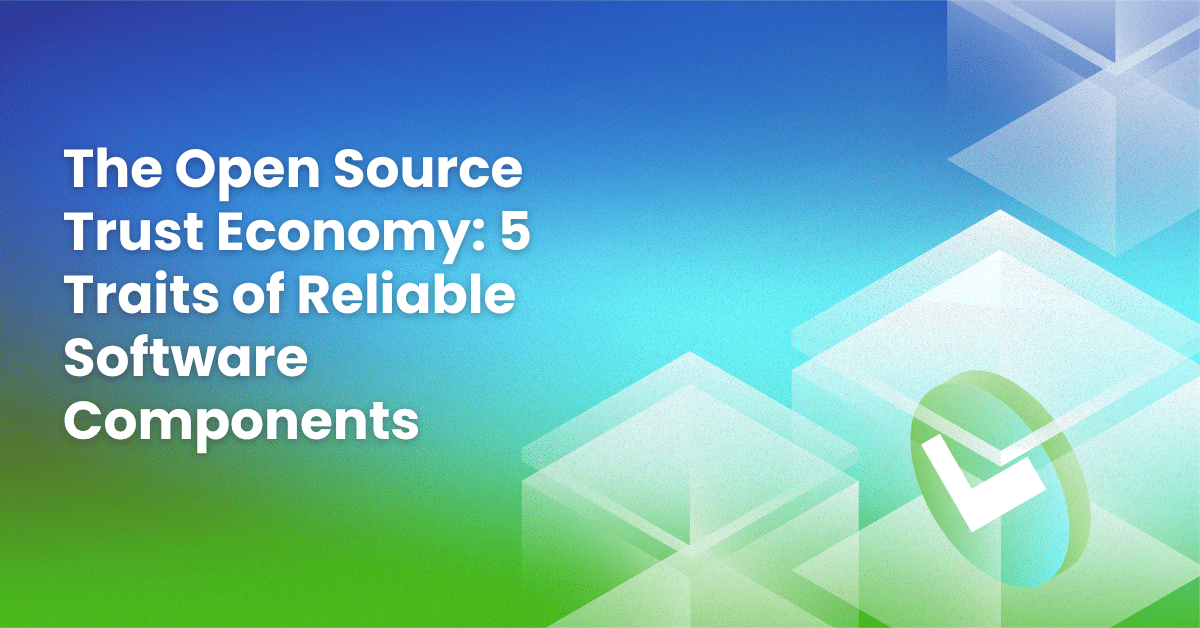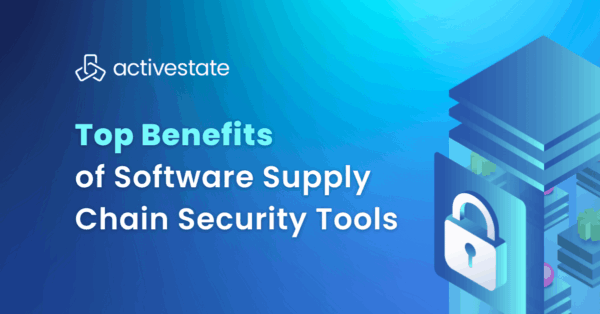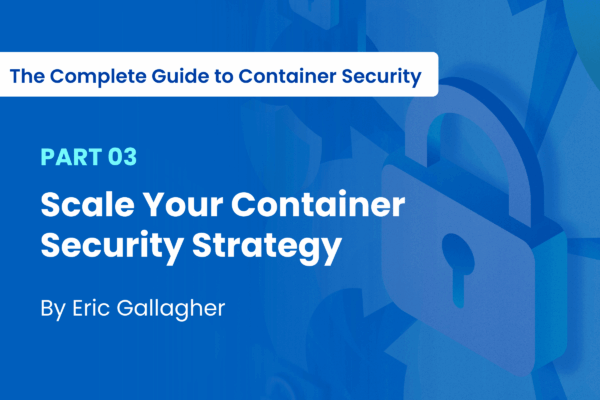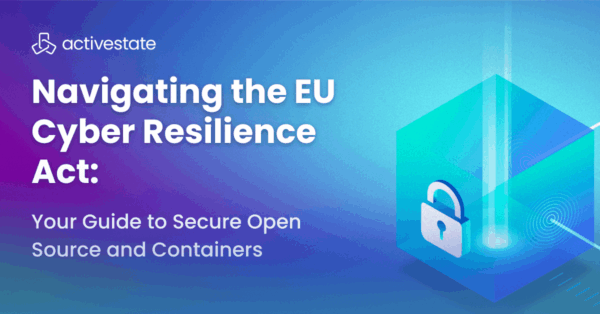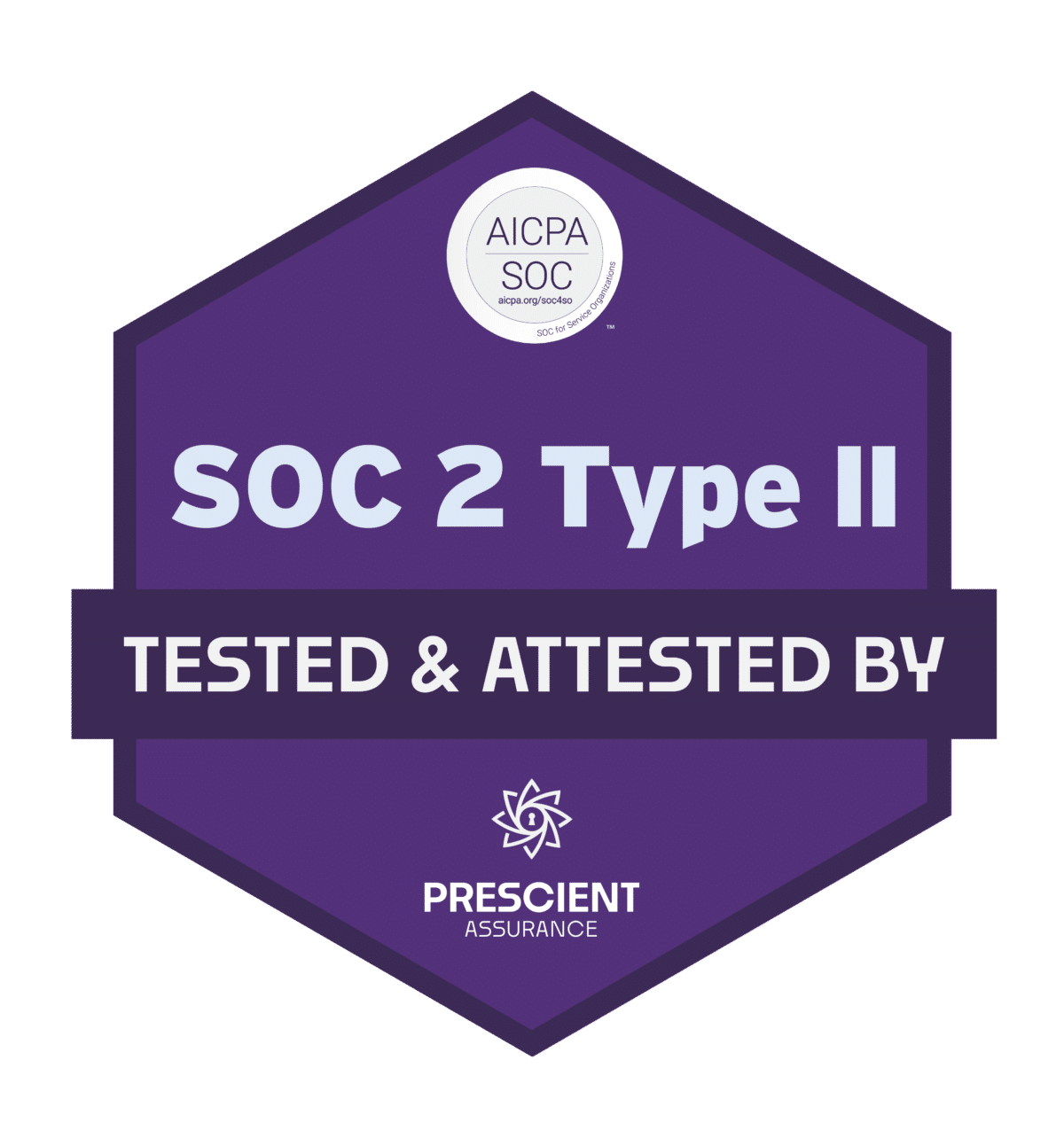Open source has become the backbone of modern software. From cloud infrastructure to AI frameworks, nearly every digital product depends on code written and maintained by people outside of the organization that ships it. This dependency introduces a new kind of economy, one built not on money, but on trust.
When teams choose to use an open source package, they aren’t simply selecting functionality. They’re making a judgment call about the reliability of strangers’ code, the health of a community, and the likelihood that the project will still be supported years down the road. For many teams, this is far from an easy decision. While open source components open the door to simplified development and better tooling, using them safely requires a balance between development velocity and security.
The stakes are high. An abandoned library, a compromised dependency, or an unverified package can quickly ripple through your entire software supply chain. With the explosion of open source options available today, simply finding “the best” package is no longer enough.
At ActiveState, we recently interviewed developers, DevOps leads, and security teams about what they look for when evaluating open source. Their answers reveal a consistent pattern: the most reliable open source choices share a set of recognizable traits. Teams that know how to spot them are far better equipped to build securely and sustainably.
Here are the top five traits to look for when evaluating open source components.
1. Corporate Backing: The Signal of Longevity
For many organizations, corporate support remains the strongest indicator of long-term stability. Projects stewarded by large technology companies benefit from structured release cycles, dedicated engineering resources, and clear commitment to maintenance.
This assurance is particularly valuable in fast-moving fields like AI, where technology evolves rapidly. When a package is backed by a major player, teams gain confidence that it will continue to adapt to new standards and security requirements.
Take TensorFlow as an example. Originally developed and maintained by Google, TensorFlow has become one of the most widely used frameworks for machine learning and AI development. Its corporate sponsorship ensures continuous investment in new capabilities, backward compatibility, and security updates.
Some organizations rely exclusively on platform-vetted libraries, inheriting the trust and due diligence of the companies that maintain them. While this approach can limit flexibility around bleeding-edge or specialized technologies, it reduces risk and ensures a baseline of quality.
2. Active Development and Community Health
Corporate sponsorship provides structure, but community health determines longevity. A vibrant, active community is often the best indicator that a project will continue to evolve and remain relevant.
Look for consistent activity. A healthy repository has regular commits, recent releases, and responsive maintainers. For instance, Kubernetes, governed by the Cloud Native Computing Foundation (CNCF), has thousands of contributors, rapid iteration, and transparent governance. Projects that have gone years without updates often signal risk or abandonment.
Prioritize good documentation. Beyond supporting usability, documentation shows how well a project is maintained. Clear, updated, and complete documentation signals that maintainers care about adoption and support. Poor documentation is often the first visible sign of decay.
Evaluate the maintainers. Check who’s behind the code. Teams often prefer projects from reputable organizations or well-known developers. Libraries like NumPy, developed by recognized leaders in the data science community, inspire confidence because of their proven track record and transparent contributor base. Projects with uncertain ownership or excessive forking introduce avoidable uncertainty.
3. Maturity Over Novelty
In open source, maturity often translates into reliability. Stable, multi-version projects have endured real-world testing and refinement over time.
Take PostgreSQL as an example. With more than two decades of active development and robust version history, PostgreSQL represents the kind of maturity enterprises rely on. Its evolution from early releases to today’s high-performance, security-conscious versions demonstrates the value of incremental improvement over experimentation.
By contrast, early-stage projects or version 0.x releases may look innovative but often lack the documentation, governance, and user feedback needed for enterprise-grade dependability. The best approach is to balance innovation with predictability. Adopt proven technologies that have stood the test of time while keeping an eye on emerging ones that may evolve into long-term solutions.
4. Clear Licensing and Compliance
Cost remains a practical factor, and open source continues to offer an unmatched economic advantage. However, compliance and licensing cannot be ignored. Projects with permissive licenses such as MIT, BSD, or Apache 2.0 are typically easier to integrate into enterprise workflows. They promote broader adoption and remove potential legal friction.
Teams should also look for clear licensing documentation and provenance for all dependencies. Projects that lack transparency around their origins, bundled components, or licensing terms can create legal and operational headaches later on.
5. Verified Provenance and Secure Maintenance
Even when a package appears healthy, teams increasingly want verifiable assurance that it has been built securely from trusted sources. With the rise in software supply chain attacks, teams need verification that goes beyond vulnerability scanning. This includes how the software was built, what dependencies it includes, and whether updates are maintained consistently.
The challenge with this approach is that it can limit the potential that open source offers development teams. What if you want to use a new technology? A library that offers highly specialized functionality? Strict vetting processes can create bottlenecks that slow innovation.
The Power of Curated Open Source Catalogs
At ActiveState, we hear a similar story from our customers time and time again. Teams waste countless cycles managing trust across hundreds or even thousands of components and dependencies. Instead of being a tool to accelerate product innovation, open source becomes yet another burden to manage.
That’s why many organizations are now looking to curated catalogs of pre-vetted components.
At ActiveState, our Secure Open Source Catalog was built to provide exactly that: a single, verified source for open source components built from original source code, continuously updated for security and compliance, and backed by decades of open source build expertise. As the most comprehensive open source catalog available – currently at 40M+ components and growing – we leverage advanced AI capabilities that allow us to rapidly ingest and rebuild entire ecosystems, bringing new components into the catalog faster than ever before.Using this catalog, teams can access secure language components, build custom runtimes, and assemble hardened container images to support any development or deployment use case.
Building on a Foundation of Trust
The open source trust economy isn’t going away. If anything, it’s becoming more critical as software supply chains grow increasingly complex. Every dependency you add is a vote of confidence in a community, a maintainer, or a corporate steward. The question is whether you have the time, tools, and expertise to validate that trust at scale.
The five traits outlined here provide a framework for making better decisions, but they’re only the starting point. The real advantage comes from having systems in place that continuously monitor, verify, and maintain the integrity of your open source stack. Organizations that treat open source trust as a strategic priority rather than a tactical concern will move faster, build more securely, and avoid costly disruptions.Would your organization benefit from a curated catalog of secure open source? Contact our secure open source experts and we’ll show you how ActiveState can help.


